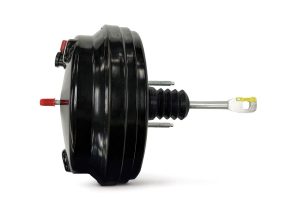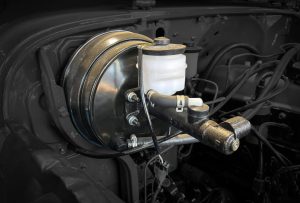The brake booster is a crucial component of your car’s braking system. Its job is to amplify the force you apply to the brake pedal, making it easier to slow down or stop the vehicle. Without it, braking requires significantly more physical effort, and stopping distances may increase — putting your safety at risk.
Fortunately, testing a brake booster doesn’t always require a professional mechanic. With a few simple tools and careful attention, you can diagnose common brake booster issues at home. This guide will walk you through the process step-by-step.
What Is a Brake Booster and Why It’s Important

A brake booster uses engine vacuum (or a dedicated pump in some models) to assist your braking effort. When you press the brake pedal, the booster multiplies the force sent to the master cylinder, which then sends pressurized brake fluid to the calipers or wheel cylinders.
Key Benefits of a Properly Working Brake Booster:
-
Reduces pedal effort for comfortable braking
-
Ensures quicker braking response
-
Maintains consistent braking power during extended use
-
Increases overall driving safety
Common Symptoms of a Failing Brake Booster
Before testing, it’s useful to know what signs might indicate a problem:
| Symptom | Possible Cause |
|---|---|
| Hard brake pedal | Loss of vacuum assistance |
| Longer stopping distances | Reduced braking power |
| Hissing sound when braking | Vacuum leak in booster or hose |
| Engine stalling when braking | Severe vacuum leak affecting engine air/fuel mixture |
| Brake warning light | Booster or related system fault |
If you experience one or more of these symptoms, it’s worth testing your brake booster right away.
Tools You May Need
-
Basic wrench or socket set
-
Flashlight
-
Vacuum gauge (optional, for more precise testing)
-
Safety gloves
Step-by-Step: How to Test a Brake Booster at Home
Step 1: Safety First
-
Park your car on a level surface.
-
Engage the parking brake.
-
Turn off the engine and allow it to cool down before starting the test.
Step 2: The Basic Function Test
-
With the engine off, pump the brake pedal several times to remove any residual vacuum in the booster.
-
Press and hold the brake pedal down firmly.
-
Start the engine while keeping pressure on the pedal.
-
Result Interpretation:
-
Normal: The pedal should sink slightly as the engine starts, indicating the booster is using vacuum to assist.
-
Faulty: If the pedal does not move or feels hard, the brake booster may not be working.
-
Step 3: Vacuum Leak Test
-
With the engine running, press the brake pedal and listen carefully for a hissing noise.
-
If you hear hissing near the brake pedal or booster area, you may have a vacuum leak.
-
You can use a vacuum gauge by connecting it to the vacuum supply hose to measure actual vacuum levels.
-
A healthy booster should hold vacuum after the engine is turned off.
-
If vacuum drops immediately, there’s likely a leak.
-
Step 4: One-Way Valve Check
The brake booster has a one-way check valve to keep vacuum inside when the engine is off.
-
Disconnect the vacuum hose from the booster and remove the valve.
-
Try blowing air through the valve in both directions.
-
Air should only pass one way.
-
If air flows both ways, replace the valve.
-
Step 5: Pedal Feel Consistency
During a short drive (if safe), note:
-
Any changes in pedal resistance over time
-
Delayed braking response
-
Intermittent loss of power assist
If symptoms appear only sometimes, the issue may be with the vacuum source rather than the booster itself.
Maintenance and Prevention Tips

-
Inspect the vacuum hose regularly for cracks or loose fittings.
-
Replace the brake fluid as per the manufacturer’s schedule.
-
Keep an eye on any changes in brake pedal feel — early detection prevents costly repairs.
-
Avoid driving with a faulty brake booster — braking distances can increase dramatically.
Brake Booster Testing Summary Table
| Test Method | Healthy Booster Result | Faulty Booster Sign |
|---|---|---|
| Engine start with pedal pressed | Pedal sinks slightly | No movement / hard pedal |
| Vacuum leak check | No hissing noise | Audible hissing |
| One-way valve test | Air passes one way only | Air passes both ways |
| Vacuum gauge reading | Holds vacuum after engine off | Vacuum drops immediately |
Final Thoughts
A functioning brake booster is essential for safe driving. Testing yours at home is straightforward and can help you identify issues early. If your tests suggest a problem, replace the booster promptly to restore safe braking performance.
You can easily find high-quality replacements here: buy Brake Booster online.